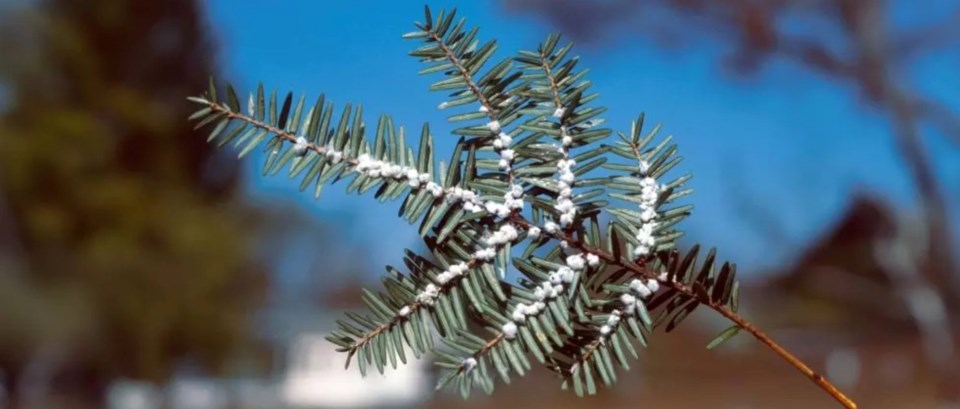The Regional Municipality of York is bracing for another invasive species that could be making its way here to harm local trees.
The hemlock woolly adelgid (HWA) is an invasive species that was established in Ontario, which attacks and kills hemlock trees by attaching to branches and feeding on the base. Spring will be the peak time for egg sacs, and the insect has appeared in the Niagara Region, Northumberland County and was recently spotted in Hamilton.
“HWA has not yet been sighted in York Region. Early detection is the most successful way to minimize the damage and cost,” the region said in a news release. “York Region residents and visitors to the York Regional Forest play a vital role in preventing the introduction and spread.”
The insect has been around the continent for years, first reported in the United States in 1951 and with no natural enemies in Canada. Although there is no known health hazard associated with the pest, they pose a threat to hemlock trees, present in 377 hectares of the York Regional Forest.
The region said it plans to set up a formal monitoring program and is encouraging partners like municipalities to monitor hemlock trees on their respective properties.
The region advises avoiding placing bird feeders near hemlock trees as birds can transport the insects and brush off clothing and pets after visiting trails and forests.
You can report suspected sightings of the egg sacs to the Canadian Food Inspection Agency at [email protected] or 647-790-1100.
Local municipalities had to address an influx of the LDD moth in recent years potentially damaging trees, though the populations of that invasive species declined in 2023.



